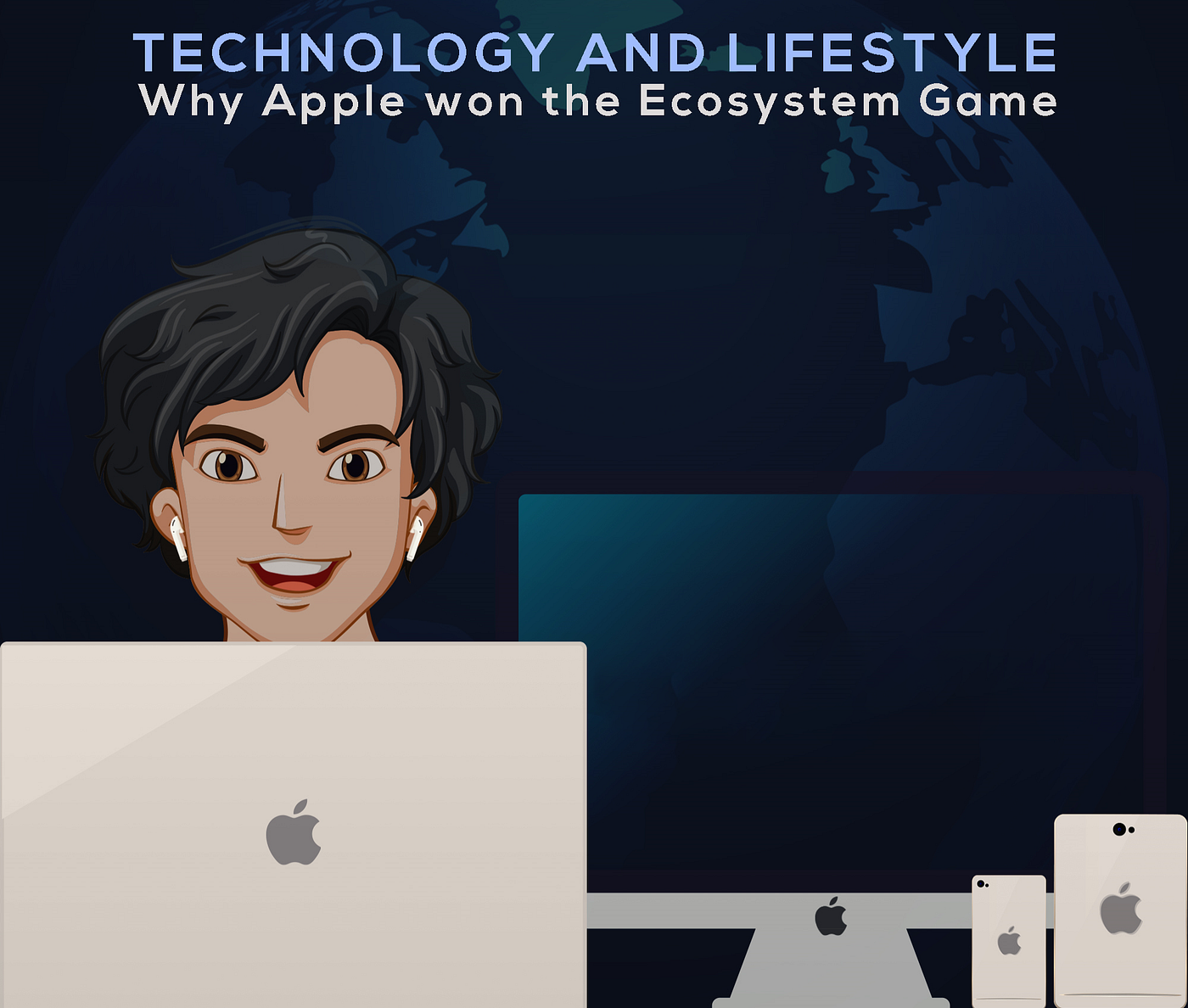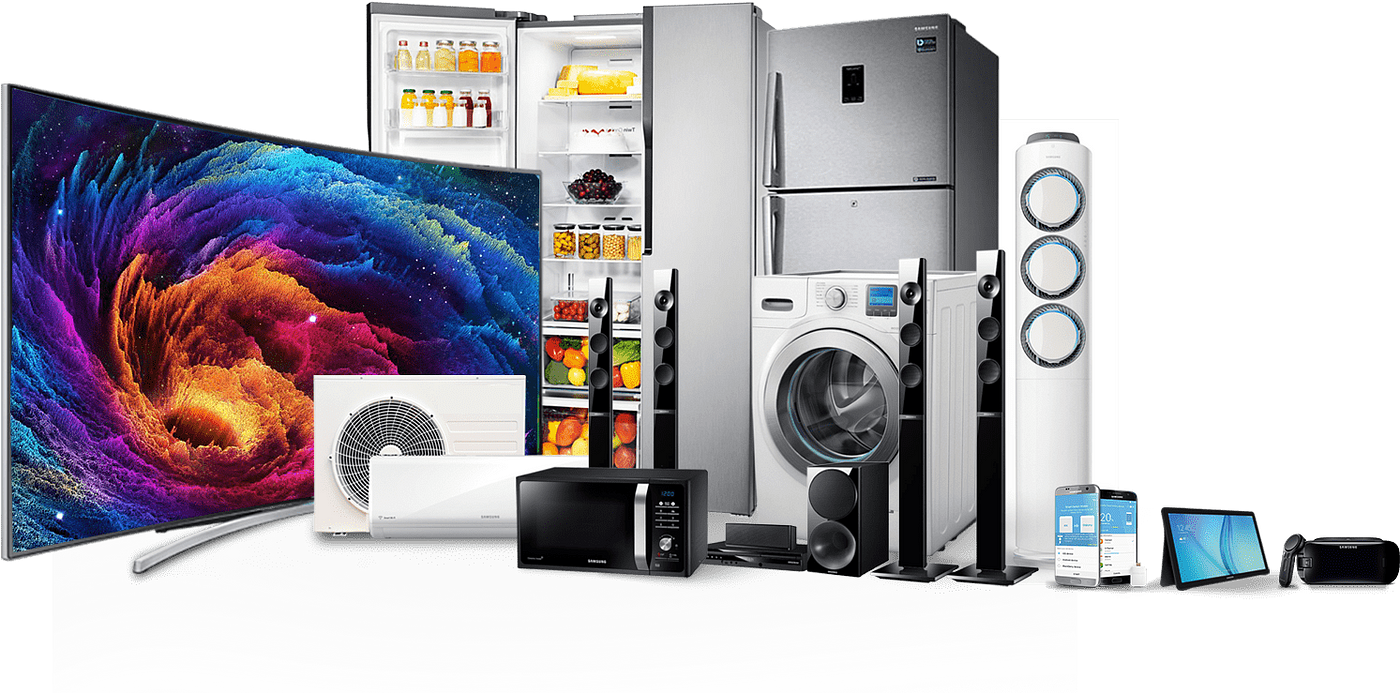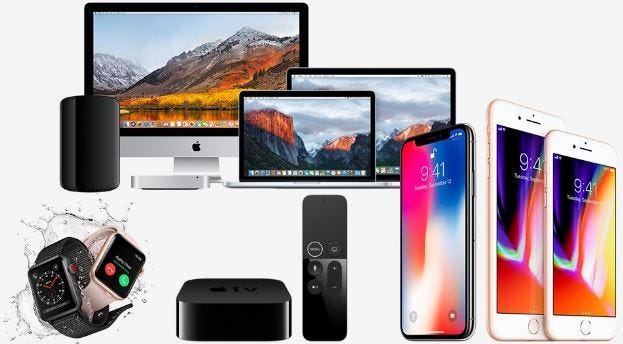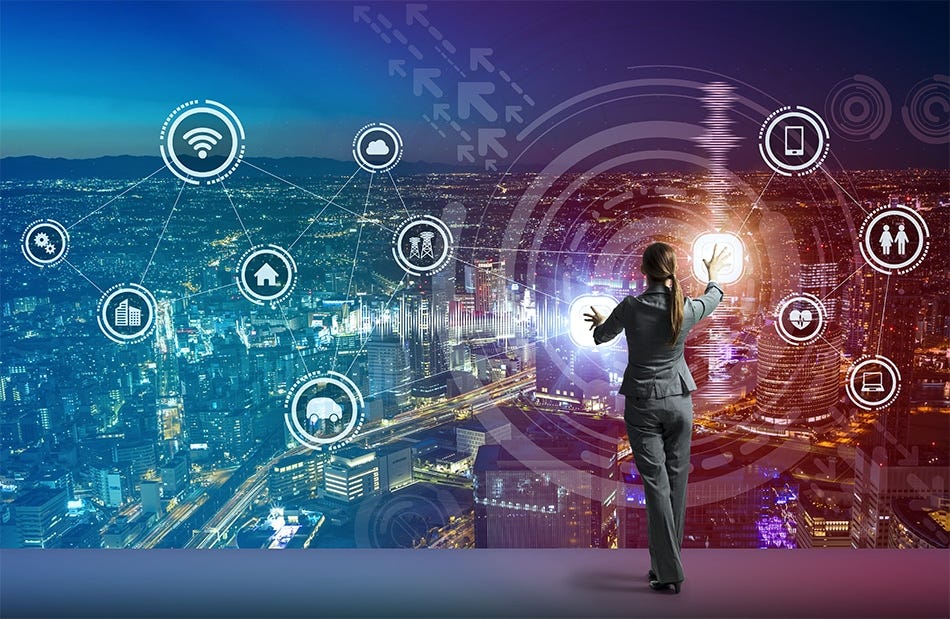- The Ecosystem Wars: A One-Sided Battle?
- Ecosystems: They rule our lives in this age.
- Ecosystems: What are they? How do they work?
- The Current Market
- Apple’s remarkable Dominance:
- The Lead-Up — Making of the Kingdom:
- Crowning the King and ruling the Kingdom:
- The Prosperous Kingdom’s Subjects — Not independently great but co-dependently marvellous
- Peering across the walls — It isn’t the Wild West anymore.
- Conclusion
The Ecosystem Wars: A One-Sided Battle?
Ecosystems: They rule our lives in this age.
Ecosystems: What are they? How do they work?
In 2020, our lives depend not only on social integration with society, but also on electronic integration with smart computing devices. To put it simply, technology and lifestyle are inseparable, and “Digital Ecosystems” decide our future acquisitions in the tech world.
This year has been an unmitigated disaster that has affected almost every industry, with exception to internet and entertainment services. With COVID-19 ravaging economies and leading to the cancellation of events, sporting leagues, tournaments, and even the bigger once-in-four-year affairs like Olympics, it has crushed everyone’s dreams and wrought havoc globally. To combat the deceivingly dangerous pandemic, stay-at-home orders and social distancing protocols have been widely advocated to contain the spread as much as possible. Despite these measures, due to mishandling or just sheer numbers, the death tolls keep mounting and an end to this pandemic doesn’t seem to be approaching anytime soon.
Meanwhile, there is only so much a person can do stuck at home. Humanity, as a species, relies on social integration and interaction to stay mentally sane (and the rise of social media decisively illustrates my point). Although advancements in technology push the boundaries of communication as much as possible, loss of physical interaction is emotionally and psychologically damaging. Yet, there does exist the proverbial silver lining: O ur Digital Lifestyle.
Ideally, every ecosystem aspires to function like the OS from the movie “Her”. Taking inspiration from that completely mind-blowing scene, it is time to test and push the capabilities of smart-home devices and our digital ecosystems. Their presence has kept us chugging along in a rapidly advancing technological era and the ease-of-use is guaranteed with their involvement.
By this point in the article, I have mentioned the term “ecosystem” multiple times. For those who are new to this term or do not understand what it means, it refers to the reliance of the objects and organisms that inhabit a segment of the biosphere on each other and their co-dependent existence.
It’s a biology term ported over to the tech-sphere. In tech usage, the biosphere is our home environment, the objects are the devices we use and the organisms are us. The co-dependence is our reliance on their services and features while they take from us resources and personal information to provide us with those services.
Another significant addition to the ported term is also integration with its services and devices. The selling point of the concept of ecosystems is their capacity to seamlessly interact and integrate.
Today, most of the big tech has trained their guns on bringing their digital ecosystem setups to market. The reason behind this seemingly fantastic, consumer-oriented initiative is because of a much larger financial one. An ecosystem guarantees a loyal consumer and/or the complete control of one company on that customer’s tech-related purchases and acquisitions. In essence, these loyal customers become their core consumers and the companies make huge profits of a relatively small user base (Apple has demonstrated this strategy reasonably well).
The Current Market
The market today is dominated by Apple, Google, Microsoft, Amazon, and Samsung. Each of these companies offers unique methods of integration and different services. Their services can be broadly categorized into cross-platform and platform-specific. Microsoft is the only true cross-platform ecosystem, while Apple is completely platform-specific. Google, Amazon, and Samsung apply varying degrees of cross-platform and platform-specific measures.
Samsung is perhaps the most exhaustive ecosystem offering everything from household appliances to smart-home devices and not to mention the dominance in the global smartphone market. Ironically, even though they are best suited to dominate the ecosystem play, they are the worst in the list due to a lack of cohesive experience and integration on their devices.
Under CEO Satya Nadella, Microsoft has completely transitioned itself into a software ecosystem with Office365, Microsoft Azure, and other services making up a core of its ecosystem. It has also progressed to become far more open-source than it had set out to be (under Bill Gates and Steve Ballmer). This makes it an amazing software suite for professionals and their productivity. Its lack of a proper smartphone and smart home digital assistant makes it a huge hindrance and hard to recommend. That is notwithstanding that, as of today, you can essentially convert any Android phone to a Windows phone by opting to use all of Microsoft’s apps including its launchers and the mobile office suite. Its recent foray into hardware products in the Surface line might finally make them a good choice to recommend (given that their surface line is receiving critical acclaim barring few issues).
Google and Amazon:
When Apple introduced Siri in 2011, Apple left it for years as a fancy feature. However, Amazon viewed it as a potential consumer and data mine, came up with its then best-in-class digital assistant Alexa, Echo speakers (creating the smart-speaker market and dominating it ever since) and Fire Devices in 2014.
In contrast, Google adopted a different approach. It decided to leverage not only its strong presence in the smartphone world but also its services (web services included) and their integration with its digital assistant (Google Assistant) and its Pixel, Home, and Nest devices to achieve a more complete ecosystem.
However, due to the huge number of Android and PC OEMs (Original Equipment Manufacturers), it becomes a highly inconsistent experience and the cohesiveness is lost in the ecosystem. That situation is slowly changing. It still doesn’t change the fact that Google is the king of web services and the web ecosystem and Amazon is an amazing place to not only purchase products at a great price but also read books, listen to music, watch movies, and a whole lot more with a Prime account.
When talking about ecosystems, it’s a crime to neglect the king and leading contributor — Apple. Arguably the best ecosystem provider today, Apple has its success and failures including its platform-exclusivity constraints and exceptionally limited choices offered at a scorching premium (if you prefer a hole in the wallet no one’s here to disagree; though that might be changing with a release like iPhone SE 2020).
Apple’s remarkable Dominance:
It is no secret that despite its largely lagging market share among smartphones (Android — Google) and personal computers (Windows — Microsoft), Apple has mastered the ecosystem war. In addition, it is the most successful in single-handedly dominating the purchase decisions of its consumers based on its ecosystem. The question that inevitably arises — “How did Apple pull this off?”. It’s quite simple really. Apple disrupted 6 major industries since the beginning of the 21st century.
1. Music players and Music Retailing (in turn Online Retailing);
2. Hardware Retailing and Servicing;
3. Personal Computing, Operating Systems, Creative Applications, and Productivity Software Suites;
4. Smartphones and Application Delivery;
5. Tablets and Handheld Devices;
6. Wearables and Services.
Speaking of services, Apple’s recent entry into the banking sector through its partnership with Goldman Sachs has brought forth the Apple Card and Apple Pay adoption to the mainstream market. For a newly launched product, Apple has seen substantial success as consumers have widely adopted this service to obtain industry-leading ease-of-use features, amazing payment and cash-back structures, and infographics in the wallet app that help regulate consumer spending. Based on the recent reports, it seems that Apple is primly set to disrupt yet another industry.
The Lead-Up — Making of the Kingdom:
To gain a better understanding, we must travel back in time to the early 2000s, specifically to 2001. Apple had just had a resounding success with its iMac G3 that was the first computer that came in a colour other than black and beige. Its intuitive design and beauty made it a mainstay in many places and helped it become one amongst the best selling desktop computers of all time. That year, Apple also targeted the music industry. Remember those huge cassette-players and Walkmans that were the trend? Yeah, those had to go. The release of the iPod paved the way for the dominance of MP3 players and in turn its dominance for most of the 2000s. Not only did Apple devise an intriguing and impressive music player, but it also revolutionized the music industry by doing away with vinyl. At that time, piracy through Napster was destroying official sales channels and the iTunes Store became the saviour, changing it all to give a legitimate way to download a song for $ 0.99.
2001 also introduced OS X or as we call it now MacOS. Windows, the major OS for most of the computers was graphically incapable, had sudden performance and technical difficulties (remember the crashes and the “Blue Screen of Death”?), and its rather monopolistic views and opposition to Linux caused a frenzy in the developer community. Apple decided to cater to 3 communities at one go with an easy-to-use, well designed, UNIX-based, performance-oriented, and stable OS that had everyone from the average consumer to the very hard-to-please developer scrambling for Apple’s computers (whoever could afford it that is).
Over the next 10 years, Apple implemented so many changes, brought forth products like the iPhone, MacBook Air, MacBook Pro, iPad, iPod Touch with multi-touch touchscreens, and gesture-based OS that took the markets by storm. They also introduced creative applications like Final Cut Pro, Logic Pro, Xcode for professionals, iWork suite, GarageBand, and iMovie for amateurs. This made Apple’s platform look like the ideal choice for both these segments of the market.
Crowning the King and ruling the Kingdom:
The highlight of the 10 years was the iPhone. It essentially gave Apple the chance to bludgeon its way to the front from a niche, innovative company making fancy, exciting, and well-designed products to making a necessary instrument of productivity, connectivity, and entertainment. Apple also launched the concept of a marketplace for apps through its AppStore(s) into the main market, revolutionizing the way apps were delivered to a device while also extending the functionality of the device.
By 2010, Apple had a bevy of highly efficient and interconnected products. However, they realized that the next frontier is in the integration of products and services. With the launch of iCloud, they started this implementation where the ability to resume work from an Apple Device made it seem like magic. Whenever, a new product was launched, along with it a unique service and it’s seemingly magical integration was launched. This resulted in technologies like Handoff, frameworks like HomeKit, SiriKit, PencilKit, and relentless pursuit by Apple to provide an API for almost every product and service that provided developers with a unique advantage to enhance these integrations between products and the competing devices were left hanging.
When Apple launched its wearable segment of products, all the ecosystem integration and advantages were clearly exploited and the offering of this seamless interaction between Apple products took the market by storm. The best smartwatch is Apple Watch, the most popular truly wireless earbuds are the AirPods, the best tablet to get is the iPad, the most popular premium smartphone is the iPhone, the laptop chosen by most creative professionals is the MacBook Pro and so on.
Yet, the single most important device in everyone’s life became Apple’s central focus and the focal point of the entire ecosystem. Without an iPhone, the entire Apple Ecosystem becomes pointless. An iPhone not only offered Apple the unique chance of bringing in consumers to buy their other products but also make accessories that are heavily dependent on them.
For instance, the Apple Watch, considered to be a life-saver by many individuals becomes obsolete with an Android. So, the central figure and by extension the king of Apple’s ecosystem is the iPhone and in turn, its biggest source of revenue.
The Prosperous Kingdom’s Subjects — Not independently great but co-dependently marvellous
Much like the fabled phoenix, Apple rose from its ashes to become the world’s first trillion-dollar business because it realized the need to be a lifestyle brand; not only one of technology. The premium status, the unique ecosystem, and services, the attention to detail, the laser-focus on exclusivity and closed-architecture products, and the constantly innovating, radically different product cycle have bolstered Apple and given it the rise to the prominence it deserves.
To be clear, Apple has long since transcended its competitors and does not care about market share as it does in building an ecosystem with its services and devices. This is evident in the 2019’s launch of Apple Card, Apple Arcade, Apple TV+, Apple News+, and 2016’s launch of Apple Music.
The result of the two decades of hard work has concluded in this scenario- if an iPhone or iPad is bought, it is almost certain that the customer has fallen prey to the Apple ecosystem and he just doesn’t know it yet. Once on an iPhone, the apps bought on the AppStore are either unavailable on Android or the purchase has to be made again. Apple services are only on Apple devices except for Apple Music and Apple TV+. Apple’s wearables either work best with Apple devices or only with them. An iPhone or iPad is incredibly painful to use with a Windows or Linux PC. If it is iMessage that is integral to life, forget every other product. Forever. It’s designed to be a succubus, to work in a fashion that is not independently great but co-dependently marvellous.
Peering across the walls — It isn’t the Wild West anymore.
Even though everything works well among Apple products, they aren’t as cross-platform as Microsoft’s services and products or as web-friendly as Google’s services. In case iCloud, iMessage, and AppStore are important, then Apple Devices have no replacements. If it’s the products or the OSes that keep you locked in, it’s a choice of functionality and again, no replacements. Not to mention the trouble with product repairs and other premiums associated with anything Apple.
To be concise, the innovative nature of Apple in the first decade of the century propelled the sales of their devices. Capitalizing on this, Apple introduced services, accessories, features, and other exclusives to their devices that made their interactions seem “magical”. This led to a deeper dive into the ecosystem that didn’t show any way out of the walled garden that is the Apple ecosystem. This is not to say that the Apple ecosystem is bad in any manner. To achieve these levels of integration and still maintain privacy and security principles at the core is not only mighty impressive but also class-leading.
It is well known that the Apple ecosystem is the best ecosystem that exists in the tech world as Apple aims to be not only a tech brand but also a lifestyle brand. To that end, it has been successful. The gripe anyone has is that it’s limited to only Apple’s hardware and software and Apple doesn’t always make the best apps, services, or products (cue in Microsoft Outlook, Google Assistant, Amazon Echo) and this limitation is perhaps the only folly of the ecosystem.
Conclusion
Apple is the only brand to keep the ecosystem running for so long. It’s evident that Google and Microsoft are trying as hard as they can, but they have lost that edge in this competition. However, they have each inserted their trojan horse respectively, Google with their Assistant and smart speakers and Microsoft through their services being cross-platform. For now, Apple is far ahead of the competition. If, however, Apple stops innovating, the lead they had will dwindle rapidly and their walled garden might not have any more citizens.
Innovation brought them up. But affordable innovation is the only way they remain on top.
Apple needs to continue innovating with features that keep its ecosystem on top, affordably. After all, innovation without practical application is a loss to both the company and the customer.
Источник










